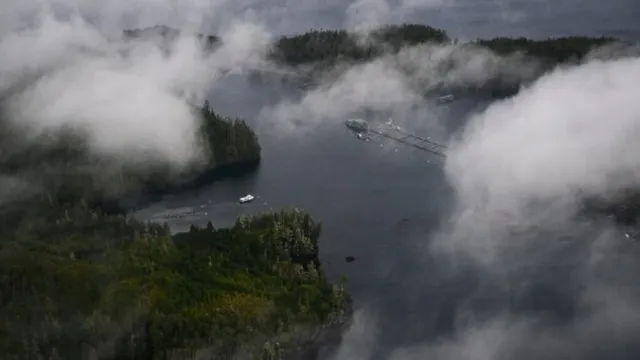
Canada's New Marine Protected Area: A Global Model for Conservation
2024-10-16 10:51- The Great Bear Sea has been designated as a Marine Protected Area to protect its rich biodiversity.
- The initiative involved collaboration among government, fishing industry, and indigenous communities to create a holistic protection model.
- Despite its potential, the model faces challenges in enforcement and balancing economic interests with environmental protection.
Express your sentiment!
Insights
Canada has established its newest Marine Protected Area (MPA) in the Great Bear Sea, located off Vancouver Island, to safeguard its rich biodiversity, which has been likened to the 'Galapagos of the North.' This initiative follows extensive consultations involving government officials, fishing industry representatives, and indigenous communities, aiming to create a holistic protection model that addresses various harmful activities in the ocean. The MPA is designed to restrict oil and gas exploration, mineral exploitation, and waste disposal, among other activities, to allow marine populations to recover. However, the initiative faces challenges, including enforcement and the need for collaboration with First Nations for monitoring. Indigenous leaders emphasize the importance of balancing economic interests with environmental protection, as recent fishing closures have impacted local communities. The Canadian model aims to provide clarity on what constitutes a protected area, contributing to global marine conservation efforts, especially in light of international agreements to protect 30% of the seas by 2030.
Contexts
In a historic move, the Government of Canada has committed to a monumental investment of $976.8 million over five years, aimed at safeguarding the health of the nation's oceans. This initiative is part of a broader strategy to conserve 25 percent of Canadian oceans by 2025 and 30 percent by 2030. The funding will not only protect vital marine habitats and species but also support the livelihoods of Canadians, ensuring that the oceans continue to provide sustainable economic benefits for generations to come. Collaboration is at the heart of this ambitious plan, as the government seeks to build meaningful partnerships with provincial, territorial, and Indigenous governments, along with local communities. These partnerships are essential for effective ocean planning and conservation activities. Canada is also taking a leadership role on the international stage, advocating for the protection of 30 percent of the world's oceans by 2030, joining forces with like-minded countries to promote sustainable ocean management. The establishment of Marine Protected Areas (MPAs) is a key component of this strategy. MPAs are legally designated ocean areas aimed at achieving long-term conservation of marine biodiversity. The government has recognized the importance of well-designed and managed MPAs as effective tools for mitigating the impacts of climate change and preserving marine ecosystems. The Great Bear Sea Project, which includes significant Indigenous-led initiatives, exemplifies this commitment to marine conservation. As Canada moves forward with its marine conservation goals, the emphasis on Indigenous stewardship and collaboration with local communities will play a crucial role in ensuring the health and sustainability of marine ecosystems. This initiative marks a significant step towards a more sustainable future for Canada's oceans, reflecting a deep commitment to environmental stewardship and the well-being of future generations.